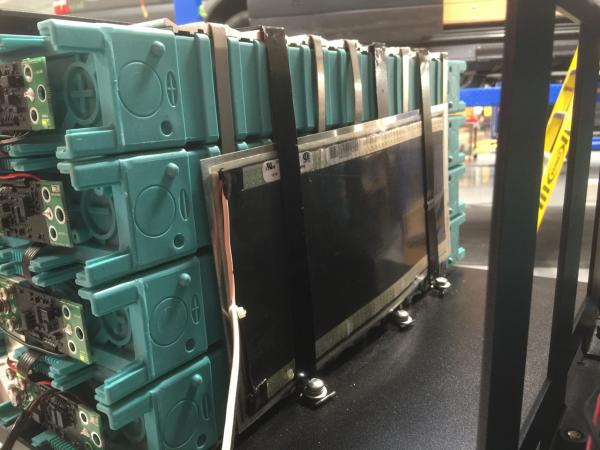I'm lucky enough to have access to a deep-freezer cold enough to test battery heaters, and big enough to hold my campervan (I.E. my driveway....).
I have one Battle Born battery wrapped in the OEM 15 watt battery heater. The heater is essentially an Ultraheat tank heater sized to wrap three sides of the battery, with two 7 watt heating areas. Space is very tight, so the thickest insulation I can fit is 1/2" of XPS on three sides, 1/4" of EPS + a reflective felt pad on the other three sides. I didn't spend too much time fitting the XPS and EPS, so it has gaps.
With the relatively poor insulation and 15 watts of heat, I measured the following:
Ambient temp in the camper: -15F
Temp inside electrical cabinet: -8F
Least-insulated corner of the battery: +22F
Top of battery, under felt pad: +38F
Where the insulation is poor I see +30F temperature difference. Where the insulation is not-so-poor I see at least +45F above ambient.
My conclusion is that with better insulation (I.E. 1" of well-fitting XPS) the 15 watts of heat is more than adequate to keep the battery above freezing under most circumstances and above the low limit of -4F under nearly any condition.
Even with as little as 1/2" of well-fitting XPS I believe that the 15 watts of heat would keep the battery 40-50F warmer than ambient, adequate to prevent damage under discharge pretty much anywhere in North America, and above freezing in most of the continent. I'll likely re-fit the XPS/EPS insulation and use Thinsulate instead of felt next time I pull the battery out.
Power consumed will be 15W continuous as temps drop well below freezing. I have a temperature switch, so the pad cycles on and off when temps are just below freezing.
I do not see a reason to have much more than 15W of heat per battery if the battery is somewhat insulated. Battle Born advises against high wattage heating pads, as they have been known to warp the cases.
Unfortunately my drive-in freezer is only cold enough to test at -15F a few days per year, so my ability to test is limited. Might have to wait a year for more results.

I have one Battle Born battery wrapped in the OEM 15 watt battery heater. The heater is essentially an Ultraheat tank heater sized to wrap three sides of the battery, with two 7 watt heating areas. Space is very tight, so the thickest insulation I can fit is 1/2" of XPS on three sides, 1/4" of EPS + a reflective felt pad on the other three sides. I didn't spend too much time fitting the XPS and EPS, so it has gaps.
With the relatively poor insulation and 15 watts of heat, I measured the following:
Ambient temp in the camper: -15F
Temp inside electrical cabinet: -8F
Least-insulated corner of the battery: +22F
Top of battery, under felt pad: +38F
Where the insulation is poor I see +30F temperature difference. Where the insulation is not-so-poor I see at least +45F above ambient.
My conclusion is that with better insulation (I.E. 1" of well-fitting XPS) the 15 watts of heat is more than adequate to keep the battery above freezing under most circumstances and above the low limit of -4F under nearly any condition.
Even with as little as 1/2" of well-fitting XPS I believe that the 15 watts of heat would keep the battery 40-50F warmer than ambient, adequate to prevent damage under discharge pretty much anywhere in North America, and above freezing in most of the continent. I'll likely re-fit the XPS/EPS insulation and use Thinsulate instead of felt next time I pull the battery out.
Power consumed will be 15W continuous as temps drop well below freezing. I have a temperature switch, so the pad cycles on and off when temps are just below freezing.
I do not see a reason to have much more than 15W of heat per battery if the battery is somewhat insulated. Battle Born advises against high wattage heating pads, as they have been known to warp the cases.
Unfortunately my drive-in freezer is only cold enough to test at -15F a few days per year, so my ability to test is limited. Might have to wait a year for more results.



